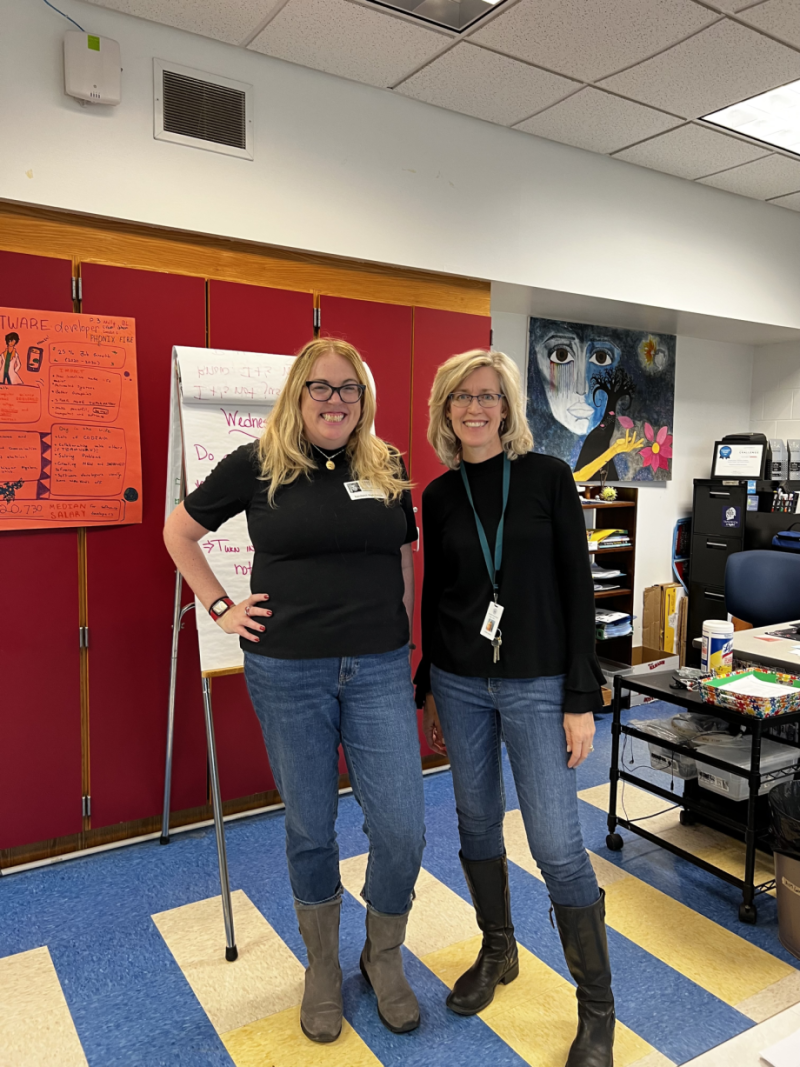Talking with Students About STEM Careers
In February, a group of seventh grade students from Sandwich Middle High School on Cape Cod, Massachusetts, emailed me to ask if I had any friends who were chemical engineers. They had been referred to me by their teacher, Ginger Lavelle, with whom I had been on the school’s Science Advisory Board for several years prior to the pandemic. The students were tasked with researching an in-demand engineering career and wanted to know if my friends could help.
Of course, I have some friends who are chemical engineers, studied chemical engineering, or use chemical engineering in their daily jobs. I responded to the students that I’d be happy to help. I set out to organize a panel of chemical engineers who would explain how they had become interested in following a STEM (science, technology, engineering, and math) education pathway and how they currently employ aspects of chemical engineering in their jobs. I wanted to include panelists with nontraditional chemical engineering jobs so students would understand the variety of careers available to STEM majors.

The first person I asked to participate was AIHA CEO Larry Sloan. A former chemical engineer, Larry answered instantaneously and enthusiastically. I then asked my friend Harry Elston, who is a client of mine, a fellow member of AIHA and the American Chemical Society, and a passionate advocate for education. Then I asked another friend from DuPont to recommend a woman who might be interested in participating, and that’s how I met Yaming Jiang.
Now I had my diverse panel. Larry has a degree in chemical engineering and employs that skillset by managing the operations of AIHA, a $16 million organization that oversees three LLCs, two educational foundations, and the allied Product Stewardship Society. Harry has a degree in chemistry but also a very strong engineering background, courtesy of the United States Navy Nuclear Engineering Program, which he utilizes in his professional consulting career. And Yaming, who also has a degree in chemical engineering, is an early career professional working as a new product development engineer.
The panel was organized as a Google Meet that would occur on Friday, Feb. 17, at the early hour of 7:40 a.m. I went to Ms. Lavelle’s classroom that morning to observe in person. It’d been a while since I’d been in the school building due to the pandemic, and I’d forgotten how loud and chaotic a middle school classroom can be. The thirty students were split into numerous groups; some were watching video interviews with various types of engineers, others were researching professions online, and still others had already conducted interviews and were working on their posters. Many students were curious about my presence, and I observed some jealousy when I explained the experience I had planned. It turned out that the students in my group were the only ones who had the opportunity to interview more than one person.
I introduced myself to the four students who were interested in chemical engineering, and then I signed into the Google Meet from my phone and listened on mute to my amazing panelists, who were warm, friendly, honest, professional, and encouraging with the students. Each student had prepared questions, but each also asked spontaneous questions when something Larry, Harry, or Yaming said resonated with them. The students’ body language conveyed exactly what I had hoped to see: inspiration and a desire to seriously consider chemical engineering as both a STEM pathway and a career.
I left the classroom elated at having provided such a unique experience for these four students. But I also wished that I could have given all of Ms. Lavelle’s students the same opportunity. I told her that I’d like to help more next year and find engineering professionals from my network that all of her students could meet and interview. If you are interested in engaging with students in my community about your STEM career or learning how to connect with educators in your own community, please email me or connect with me on LinkedIn.

Comments
There are no submissions.